Bonte Museum Ticket
4(2 Review)
Dilihat oleh 2.8k pengunjung
Ketersediaan
Minimum Pax
Confirmed
Tiket
Lokasi Pertemuan
- Bonte Museum
Included
- Bonte Museum entrance ticket
Lihat review foto
Bonte Museum Ticket Options
Bonte Museum Ticket
Overview
Visit Bonte Museum and see the harmony of traditional and modern art.
Bonte Museum is a must-visit museum in Jeju Island if you love art. The word "bonte" literally means "original form" and the museum displays artwork from the past and present in an effort to show the original beauty and artwork of humans. Come see fine traditional handicrafts and how art from the past has influenced contemporary works.
Why this museum?
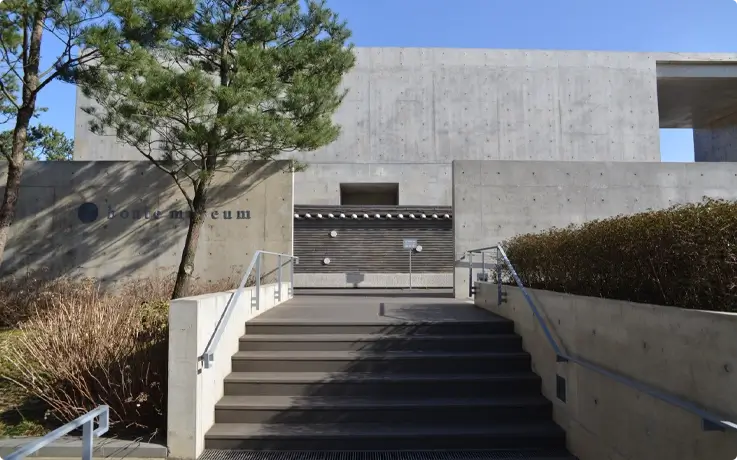
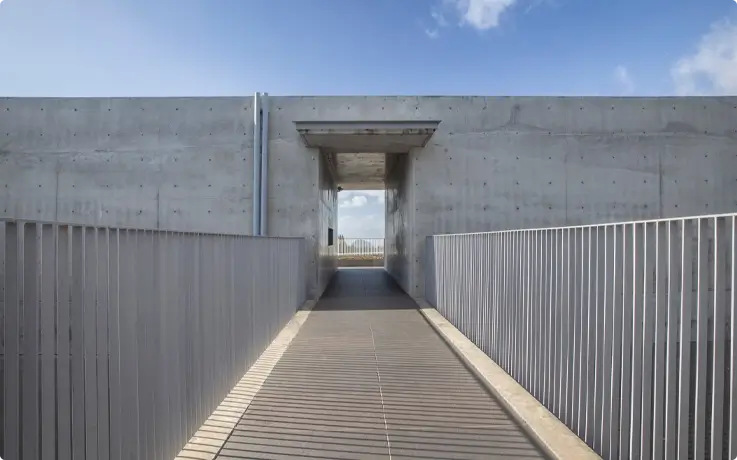
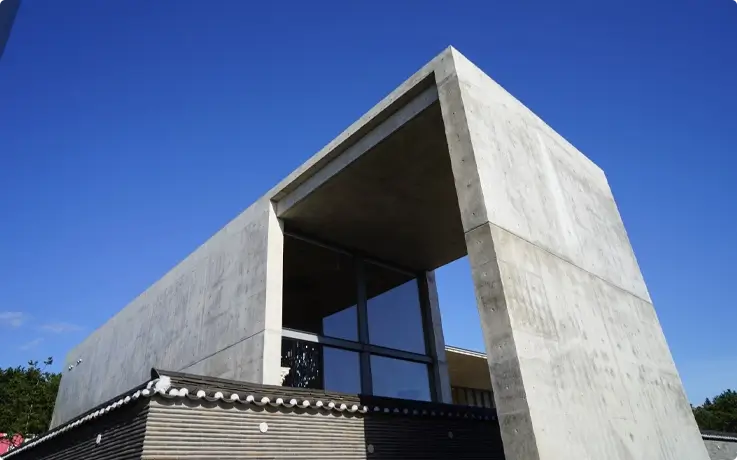
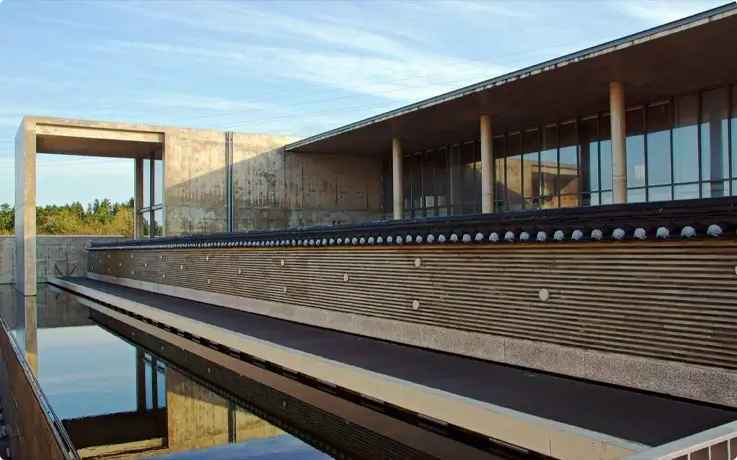
▲ Bonte Museum
Bonte Museum in Jeju Island is a striking example of Brutalist architecture designed by Tadao Ando. With raw concrete walls, geometric lines, and interplay of light and shadow, the space itself becomes part of the experience. Inside, the museum bridges tradition and modernity through a thoughtful mix of contemporary art, Korean craft, and heritage objects.
[Exhibition 1: Traditional Art & Crafts]
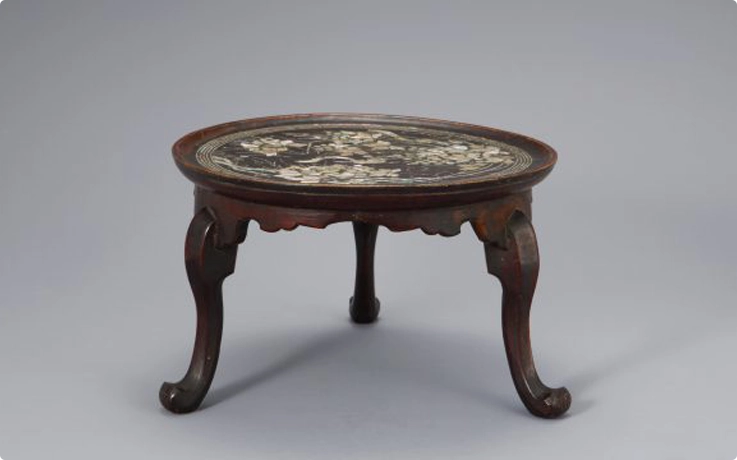
▲ Lacquered Tray with Mother-of-Pearl Grape Design
This round wooden tray features an intricate mother-of-pearl inlay on its inner surface, depicting a grape motif symbolizing abundance and fertility. Coated in a clear lacquer that highlights the natural grain of the wood, the tray stands out with its unique three-legged structure — a design known as hojok-hyeong for its outward-curving legs that resemble a tiger's.
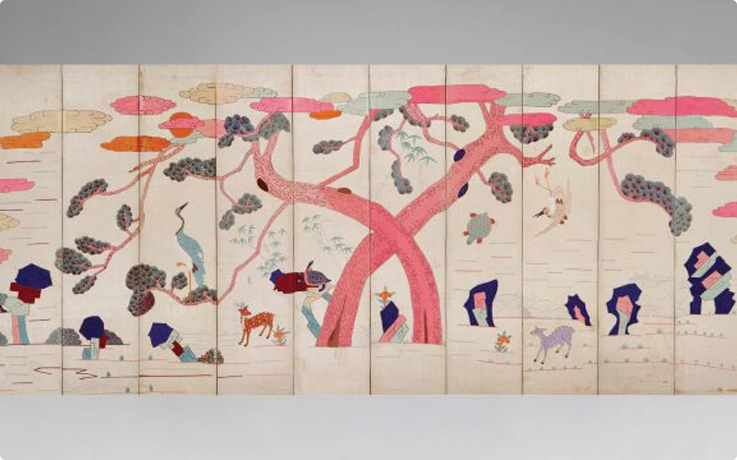
▲ Ten-Panel Folding Screen (Su Buja Sipjangsaengdo)
This ten-panel screen features two central pine trees in the form of a father and son, surrounded by traditional symbols of longevity — sun, clouds, turtle, deer, and bamboo. Rooted in Confucian values of filial piety and loyalty, the piece reflects reverence for both one’s father and the king as a national father figure. While early Sipjangsaengdo works followed strict formats, this late Joseon example shows a freer, more expressive composition, once reserved for royalty or the upper class.
[Exhibition 2: Contemporary Art]
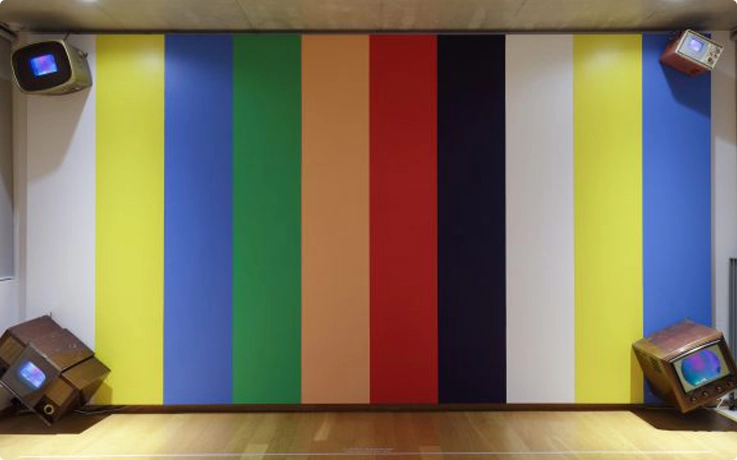
▲ I Never Read Wittgenstein by Nam June Paik (1998)
Nam June Paik playfully subverts Western logic through chaotic, non-narrative TV imagery framed around a test pattern screen. Referencing Wittgenstein’s belief that ethics and aesthetics lie beyond definition, Paik critiques rigid philosophy with humor and irony. As a Korean artist, he asserts an alternative perspective, urging a shift in how we think and perceive meaning.
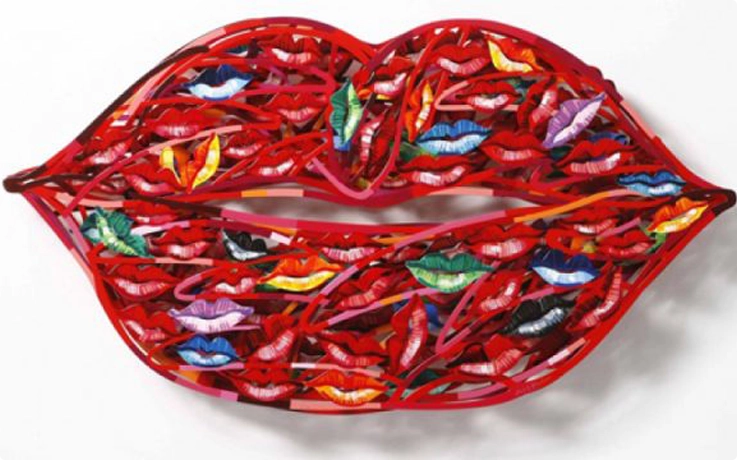
▲ 1,000 Kisses by David Gerstein (2007)
David Gerstein blends painting and sculpture in vibrant, layered works full of movement and rhythm. 1000 Kisses features a playful cluster of curved lips in bold primary colors, delivering a bright, uplifting message. Using laser-cut metal or wood, hand-painted for added depth, his pieces blur the line between illustration, fine art, and object.
[Exhibition 3: Yayoi Kusama]
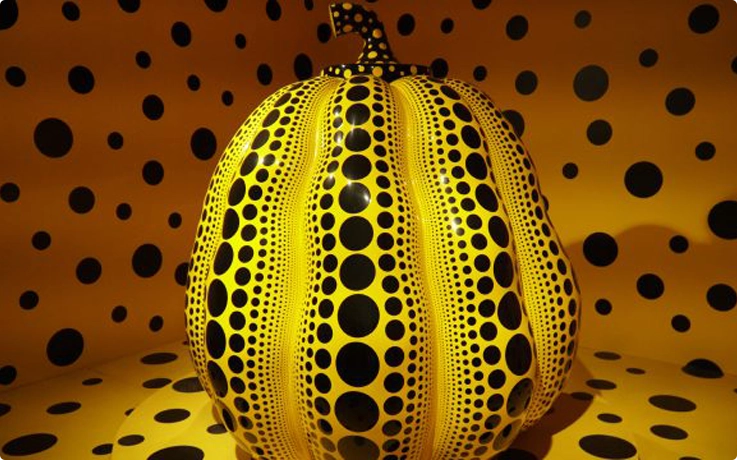
▲ Pumpkin by Yayoi Kusama (2013)
Covered in her signature polka dots, Pumpkin is one of Yayoi Kusama’s most iconic works, found in major cultural spaces worldwide. The pumpkin’s warm, humorous form offered the artist comfort during a turbulent childhood, becoming a lasting symbol of stability and affection in her art.
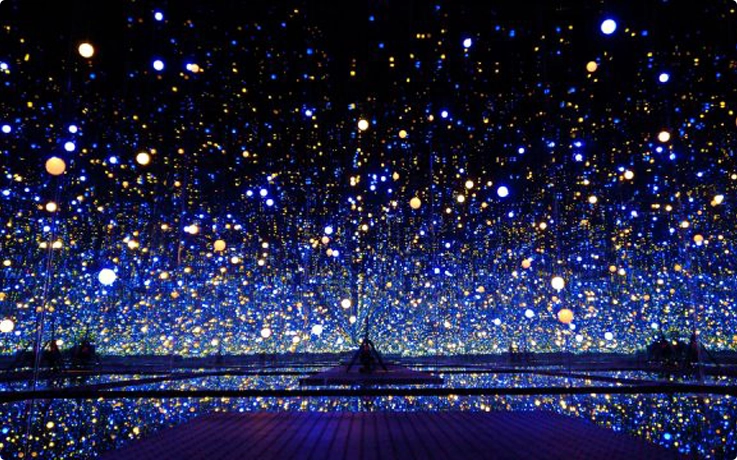
▲ Infinity Mirrored Room: Gleaming Lights of Souls by Yayoi Kusama (2008)
This immersive installation reflects Yayoi Kusama’s signature use of repetition and light to express her hallucinatory visions. Countless mirrored dots expand endlessly, symbolizing both infinite growth and self-erasure. Viewers are drawn into a trance-like state, momentarily losing their sense of self within the boundless space.
[Exhibition 4: Traditional Funeral Rites]
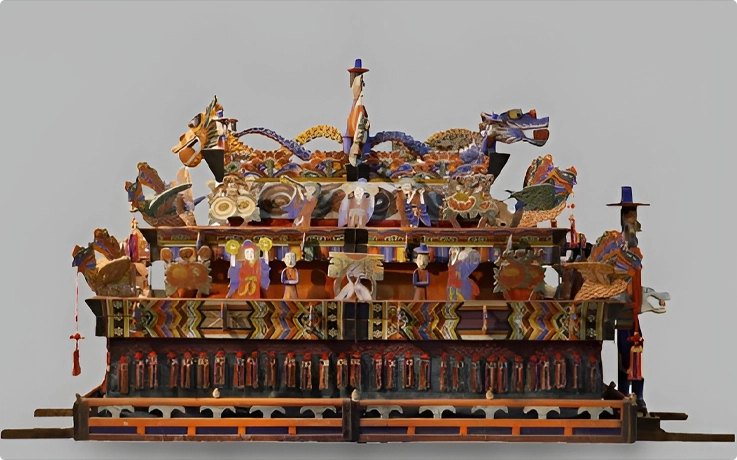
▲ Traditional Funeral Bier (Sangyeo)
Used to carry the deceased during funeral processions, the sangyeo reflects traditional Korean beliefs about death and the afterlife. Often decorated with symbolic ornaments to express unresolved wishes and prayers for peace in the next life, its design varied by region, status, and wealth. Modeled after the finest homes of the time, it represented a final gesture of love — sending the departed in honor and comfort.
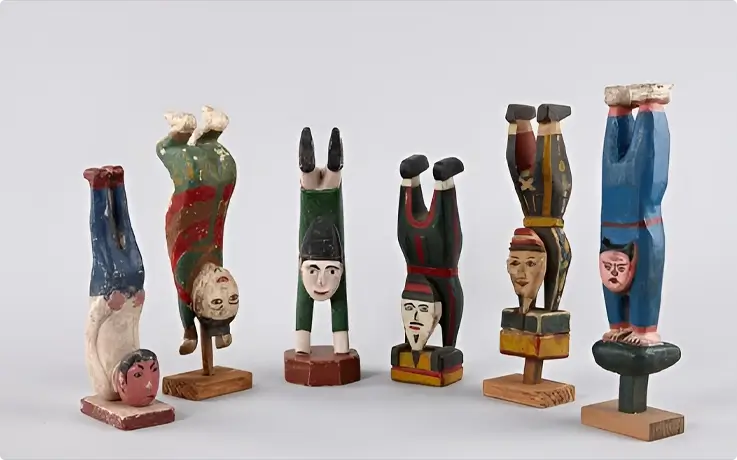
▲ Funerary Figurines (Kkokdu)
Kkokdu are wooden figurines placed on funeral biers to comfort and guide the deceased on their journey to the afterlife. Often shaped as child attendants, scholars, dancers, or immortals, they served both ritual and decorative purposes. Through cheerful gestures and symbolic roles, kkokdu reflect a desire to ease fear and sorrow, expressing hope for a peaceful passage rather than mourning alone.
Bonte Museum is a must-visit museum in Jeju Island if you love art. The word "bonte" literally means "original form" and the museum displays artwork from the past and present in an effort to show the original beauty and artwork of humans. Come see fine traditional handicrafts and how art from the past has influenced contemporary works.
Why this museum?
- Museum designed by Pritzker Architecture Prize winner, Tadao Ando
- Classic and modern artwork of both local and international artists
- Enter the "Infinity Mirrored Room" designed by famous Japanese artist Yayoi Kusama
- A total of 4 exhibition halls, 1 special exhibition hall, and an outside garden, each showcasing different types of artwork




▲ Bonte Museum
Bonte Museum in Jeju Island is a striking example of Brutalist architecture designed by Tadao Ando. With raw concrete walls, geometric lines, and interplay of light and shadow, the space itself becomes part of the experience. Inside, the museum bridges tradition and modernity through a thoughtful mix of contemporary art, Korean craft, and heritage objects.
[Exhibition 1: Traditional Art & Crafts]

▲ Lacquered Tray with Mother-of-Pearl Grape Design
This round wooden tray features an intricate mother-of-pearl inlay on its inner surface, depicting a grape motif symbolizing abundance and fertility. Coated in a clear lacquer that highlights the natural grain of the wood, the tray stands out with its unique three-legged structure — a design known as hojok-hyeong for its outward-curving legs that resemble a tiger's.

▲ Ten-Panel Folding Screen (Su Buja Sipjangsaengdo)
This ten-panel screen features two central pine trees in the form of a father and son, surrounded by traditional symbols of longevity — sun, clouds, turtle, deer, and bamboo. Rooted in Confucian values of filial piety and loyalty, the piece reflects reverence for both one’s father and the king as a national father figure. While early Sipjangsaengdo works followed strict formats, this late Joseon example shows a freer, more expressive composition, once reserved for royalty or the upper class.
[Exhibition 2: Contemporary Art]

▲ I Never Read Wittgenstein by Nam June Paik (1998)
Nam June Paik playfully subverts Western logic through chaotic, non-narrative TV imagery framed around a test pattern screen. Referencing Wittgenstein’s belief that ethics and aesthetics lie beyond definition, Paik critiques rigid philosophy with humor and irony. As a Korean artist, he asserts an alternative perspective, urging a shift in how we think and perceive meaning.

▲ 1,000 Kisses by David Gerstein (2007)
David Gerstein blends painting and sculpture in vibrant, layered works full of movement and rhythm. 1000 Kisses features a playful cluster of curved lips in bold primary colors, delivering a bright, uplifting message. Using laser-cut metal or wood, hand-painted for added depth, his pieces blur the line between illustration, fine art, and object.
[Exhibition 3: Yayoi Kusama]

▲ Pumpkin by Yayoi Kusama (2013)
Covered in her signature polka dots, Pumpkin is one of Yayoi Kusama’s most iconic works, found in major cultural spaces worldwide. The pumpkin’s warm, humorous form offered the artist comfort during a turbulent childhood, becoming a lasting symbol of stability and affection in her art.

▲ Infinity Mirrored Room: Gleaming Lights of Souls by Yayoi Kusama (2008)
This immersive installation reflects Yayoi Kusama’s signature use of repetition and light to express her hallucinatory visions. Countless mirrored dots expand endlessly, symbolizing both infinite growth and self-erasure. Viewers are drawn into a trance-like state, momentarily losing their sense of self within the boundless space.
[Exhibition 4: Traditional Funeral Rites]

▲ Traditional Funeral Bier (Sangyeo)
Used to carry the deceased during funeral processions, the sangyeo reflects traditional Korean beliefs about death and the afterlife. Often decorated with symbolic ornaments to express unresolved wishes and prayers for peace in the next life, its design varied by region, status, and wealth. Modeled after the finest homes of the time, it represented a final gesture of love — sending the departed in honor and comfort.

▲ Funerary Figurines (Kkokdu)
Kkokdu are wooden figurines placed on funeral biers to comfort and guide the deceased on their journey to the afterlife. Often shaped as child attendants, scholars, dancers, or immortals, they served both ritual and decorative purposes. Through cheerful gestures and symbolic roles, kkokdu reflect a desire to ease fear and sorrow, expressing hope for a peaceful passage rather than mourning alone.
Harga
| Option | Price |
|---|---|
| Bonte Museum Ticket | Adult Youth (8~18 yrs) Child (3~7 yrs) |
- Children under 36 months are free of charge.
[Opening Hours]
- Every day: 10:00am~6:00pm

[Gallery 1]
Gallery 1 mainly exhibits traditional handicrafts and wooden furniture. You will be able to see colorful wooden toys and decorations that were used in the past. This gallery also displays "bojagi" or colorful wrapping cloth and traditional Korean attire. Marvel at the fine tapestry of unique patterns and colors.
[Gallery 2]
Gallery 2 shows the infusion of traditional and contemporary artwork. There are several sculptures and pieces of art from Korean artists for you to see. Gallery 2 also houses the museum's architect, Tadao Ando's meditation room and his original design sketches. Come experience how Ando was inspired when designing his masterpieces.
[Gallery 3]
Gallery 3 is fully dedicated to the famous Japanese artist, Yayoi Kusama. Famous for her obsession of dots, the gallery exhibits "The Pumpkin" and "Infinity Mirrored Room". At the "Infinity Mirrored Room", enter a dark mirrored room filled with dotted lights and lose yourself in the galaxy of lights. The star-like light bulbs are truly a mysterious and beautiful scene to experience.
[Gallery 4]
Gallery 4 has a theme of traditional funeral rites and the exhibition is called "Carriage to Heaven". The main display of the gallery is a "sangyeo" or a bier which is a traditional wooden platform used to carry a coffin. The large boat like bier is decorated with colorful wooden dolls and decorations. All around you will be able to see wooden ornaments that explain the traditional funeral rites.
[Gallery 5]
Gallery 5 is the special exhibition hall.
[Sculpture Garden]
Outside in the open garden are several sculptures from famous artists. You will be able to see colorful artwork by David Gerstein as he depicts the themes of happiness and joy of contemporary life. Jaume Plensa's signature sculpture of a crouching human and Rotraut Klein-Moquay's installation of a dancing gypsy can also be seen in the garden.
Cara pemesanan
- 1. Complete your booking.
- 2. Check your email.
- 3. Enjoy it.
Please keep in mind
- Taking photos of artwork in Gallery 1, 2, and 4 is prohibited.
Cancellation policy
All times are based on Korea Standard Time (KST) (GMT + 9 hours)
Non-refundable under any circumstances once the mobile ticket has been sent.
Non-refundable under any circumstances once the mobile ticket has been sent.
FAQ
When is the last entry time for the Bonte Museum?
Admission to the Bonte Museum closes at 5:00pm, and the final viewing time for all exhibitions is 6:00pm. Please keep this in mind when planning your visit.
How long does it typically take to view the entire Bonte Museum?
The average viewing time at the Bonte Museum is approximately 1 hour 30 minutes to 2 hours. We encourage you to take your time exploring the museum, allowing yourself moments to pause and create a unique experience.
How can I use the audio guide?
The audio guide provided by the Bonte Museum can be accessed via QR codes, which are available on the admission ticket, at the entrance of each exhibition hall, and at the ticket booth. As earphones are not provided, please bring your own.
What accessible facilities are available for visitors with disabilities at the Bonte Museum?
Facilities include restrooms for visitors with disabilities, designated parking spaces, ramps, and wheelchairs (one for outdoor use and one for indoor use).
What are the restrictions when entering the museum?
- No food or drinks allowed
- No pets allowed
- No photography in Galleries 1, 2, and 4
- No pets allowed
- No photography in Galleries 1, 2, and 4
Destinasi
Bonte Museum 본태박물관
Address: 380-5 Sangcheon-ri, Andeok-myeon, Seogwipo, Jeju-do, South Korea
Phone Number: +82-64-792-8108
Phone Number: +82-64-792-8108
Review
Top Tours in South Korea
Seoul
Jeju
Busan
Daegu
Top Activities in South Korea
Seoul
Jeju
Busan
Incheon
Daegu
Top Tickets & Shows in South Korea
Seoul
2025 MMA Melon Music Awards Ticket Package (Dec 20)
SBS Inkigayo Seoul Tour Package
Lotte World Discount Ticket
Seoul ↔ Phoenix Park Ski Resort Shuttle Bus
N Seoul Tower Observatory Discount Ticket
Lotte World Tower Seoul Sky Discount Ticket
2026 D Awards Tickets Package (Feb 11, 2026)
Everland One Day Pass (Ticket Only)
Jeju
Horse Show in Jeju
Gokart/ Water Sled/ Zipline/ Paintball in Jeju
Horse Riding on Jeju Island's HIllside
Arte Museum in Jeju Discount Ticket
Maze Land Jeju Discount Ticket
Jeju Loveland Ticket
Aqua Planet Jeju Discount Ticket + Ocean Arena Show + Special Exhibition
Jeju Rail Bike Ticket
Seogwipo Ferry Cruise
Jeju Jet Boat - near Jungmun Tourist Complex
Busan
Daegu
